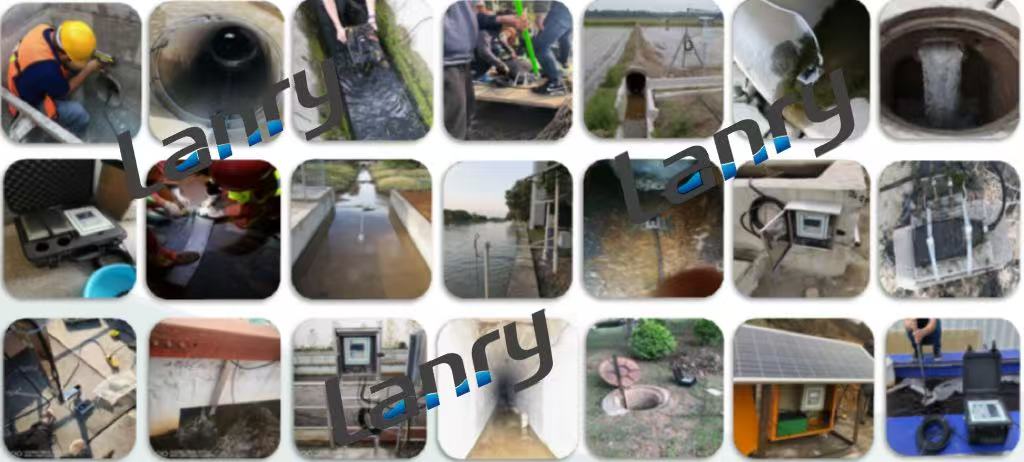I. Hydraulic Conditions
A. Flow Turbulence
Turbulent flow is a common issue in open - channel systems. When the flow is turbulent, the velocity of the fluid varies randomly in both magnitude and direction across the cross - section of the channel. Open - channel flowmeters, especially those relying on velocity - area methods (such as ultrasonic or electromagnetic open - channel flowmeters), assume a relatively stable and predictable flow profile for accurate measurement. Turbulence disrupts this assumption. For example, in a river with a rough bottom or in a channel with sudden changes in geometry, the formation of eddies and swirls can cause the flow velocity at different points to deviate significantly from the average value expected by the flowmeter. As a result, the measured velocity may not accurately represent the overall flow rate, leading to incorrect readings.
B. Flow Depth Variations
Fluctuations in flow depth can also pose problems for open - channel flowmeters. Many flowmeters, like weirs and flumes, are designed to measure flow rate based on a specific relationship between the flow depth and the discharge. If the flow depth changes rapidly or erratically, this relationship may no longer hold true. In stormwater drainage systems, for instance, sudden heavy rainfall can cause a sharp increase in the flow depth. If the flowmeter is not calibrated to account for such rapid and large - scale depth changes, it may miscalculate the flow rate. Additionally, the presence of waves or surges in the channel can further complicate the measurement of flow depth, as the flowmeter may record inconsistent depth values, resulting in inaccurate flow rate computations.
II. Channel Characteristics
A. Channel Irregularities
Natural channels often have irregular cross - sectional shapes, with varying widths, depths, and slopes. Man - made channels may also develop irregularities over time due to sediment deposition, erosion, or structural damage. Open - channel flowmeters are typically calibrated for standard, regular channel geometries. When installed in channels with irregular cross - sections, the flow distribution becomes non - uniform, and the flowmeter may not be able to accurately measure the average velocity or the cross - sectional area. For example, in a canal where sediment has accumulated on one side, the flow will be skewed, and the flowmeter may over - or underestimate the flow rate depending on its location within the channel.
B. Surface Roughness
The roughness of the channel surface affects the flow resistance and the velocity distribution within the channel. A rough surface, such as that of a channel lined with gravel or in a natural stream with rocks and vegetation, causes more friction as the fluid flows. This friction reduces the flow velocity near the channel boundaries and can lead to a non - logarithmic velocity profile, which is different from the ideal profile assumed by many open - channel flow measurement methods. Flowmeters that rely on the assumption of a specific velocity profile, like some ultrasonic Doppler flowmeters, may produce inaccurate results when the channel surface roughness is not properly accounted for. The increased surface roughness can also cause additional turbulence, further complicating the flow measurement process.
III. External Interference
A. Debris and Vegetation
Debris, such as branches, leaves, and trash, as well as overgrown vegetation in or around the channel, can interfere with the operation of open - channel flowmeters. For ultrasonic flowmeters, debris and vegetation can block the path of the ultrasonic signals, either by absorbing or reflecting the waves. This disruption can lead to incorrect signal reception and misinterpretation of the flow velocity. In the case of mechanical flowmeters, such as propeller - type flowmeters, debris can get entangled in the moving parts, causing the meter to jam or rotate at an incorrect speed. Vegetation growth near the water surface can also affect the measurement of flow depth, as it can create an uneven water - air interface that confounds depth - sensing devices.
B. Environmental Factors
Environmental factors like strong winds and temperature variations can impact open - channel flowmeter performance. High winds can create waves on the water surface in open channels. These waves can cause fluctuations in the measured flow depth, especially for sensors that rely on surface - level detection. Temperature changes can affect the physical properties of the fluid, such as its density and viscosity. For flowmeters that use the speed of sound in the fluid for measurement (e.g., ultrasonic flowmeters), changes in fluid temperature can alter the speed of sound, leading to errors in velocity measurement. In cold climates, ice formation in the channel can also pose a significant problem, as it can block the flowmeter or change the flow characteristics within the channel.
In conclusion, a variety of factors related to hydraulic conditions, channel characteristics, and external interference can cause open - channel flowmeters to provide inaccurate measurements. Understanding and addressing these factors are essential for ensuring the reliable operation of open - channel flow measurement systems.

Post time: Mar-10-2025

